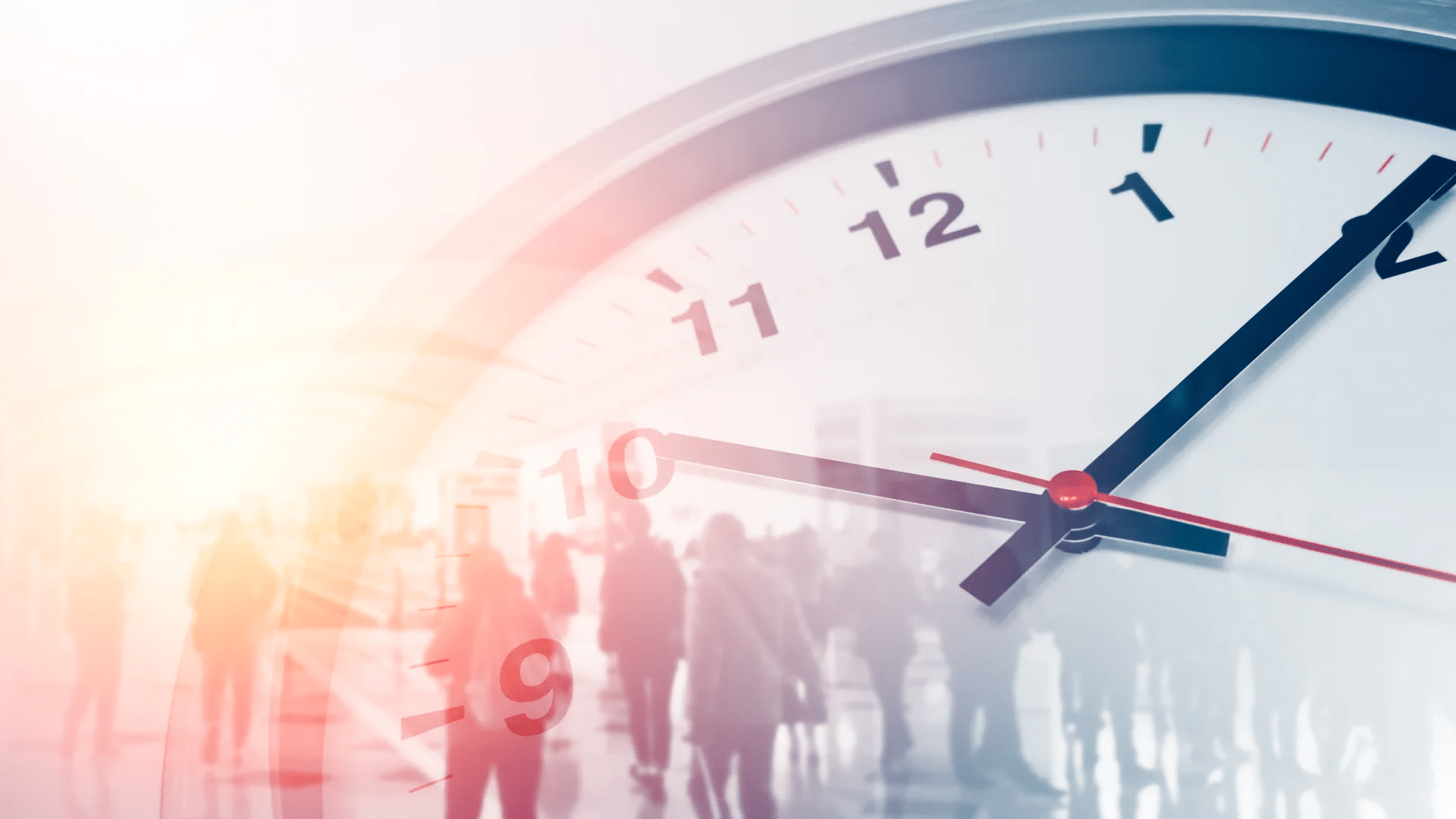Testosterone can be one of those scary things if you think you have an issue with it.
It seems like such a complex and deep scientific problem. But it doesn’t necessarily need to be a cause for concern—it’s how you deal with it that counts.
While testosterone is a crucial hormone that plays a vital role in libido (sex drive), fitness, energy levels—and male health in general—your levels do start to naturally decline with age. Sometimes, this can lead to a condition called testosterone deficiency or male hypogonadism.
When this happens, it might seem natural to jump straight to testosterone replacement therapy (TRT) as a treatment option.
But is this really the best way to reverse testosterone decline and balance your sex hormones?
That’s exactly what we’re here to look at. We’ll explore what testosterone replacement therapy is, its benefits, the potential downsides and side effects, as well as alternative ways to boost testosterone naturally and whether or not TRT is the right choice for you.
What does testosterone do?

Before delving into testosterone therapy, we should probably take a quick look at what exactly testosterone is and how it functions in your body.
Testosterone is a sex hormone that’s mainly produced in the testicles in men and the ovaries in women (albeit in far smaller amounts).
It’s often referred to as the ‘male hormone,’ as testosterone is responsible for the development and maintenance of primary and secondary sexual characteristics in males.
The development of masculine characteristics, such as deepening of the voice, facial and body hair growth, and muscle mass is all down to the production and release of testosterone.
But its influence extends far beyond just the characteristics you’re assigned in the womb and then the explosion of hormones during puberty.
Testosterone continues to play a massive role in your health, fitness, and sexual wellness throughout your whole life, including…
-
Sexual and reproductive health: As well as being vital for the development of the male reproductive organs during foetal development, testosterone also contributes to sperm production and plays a role in sexual function in adult life, including sex drive, fertility, and the ability to achieve as well as maintain an erection.
-
Muscle mass and bone density: Testosterone also assists in the growth and maintenance of muscle mass and strength by stimulating protein synthesis, which promotes muscle tissue repair and growth. Similarly, testosterone helps you maintain optimal bone density by regulating the activity of osteoblasts, the cells responsible for bone formation.
-
Energy levels and mood: A healthy and normal testosterone level is associated with improved energy, motivation, and a sense of vitality too. Plus, testosterone has been linked to mood regulation, with low levels potentially contributing to feelings of depression, fatigue, and decreased motivation.
-
Cognitive function: Research suggests that testosterone plays a role in cognitive function, including memory, attention, and spatial ability. Studies have also found a correlation between low testosterone levels and cognitive decline in some older men.
-
Metabolism and body composition: Testosterone also has an influence on your metabolism and contributes to maintaining a healthy body composition. As it supports the regulation of fat distribution, lower testosterone levels can contribute to an increase in body fat and reduced muscle mass.
- Cardiovascular health: Another important aspect of testosterone involves its role in the maintenance of cardiovascular health. By influencing the production of red blood cells, regulating blood clotting, and contributing to the dilation of blood vessels, testosterone helps promote healthy blood flow and can potentially reduce the risk of cardiovascular disease.
This is all well and good when your testosterone levels are up at healthy levels, but if they start to drop then problems can start to crop up.
When your levels become too low, it can have significant impacts on various aspects of your physical and mental wellbeing. This generally sparks the exploration of TRT as a potential solution that can alleviate the symptoms associated with a low testosterone level.
But how do you know you might have low testosterone in the first place? What are the signs you should be looking out for? Let’s explore.

What are the signs and symptoms of low testosterone levels?
Low testosterone can manifest in various ways, some of which can significantly impact your quality of life.
It’s worth highlighting that symptoms can vary from person to person. And experiencing one or more of the following symptoms does not necessarily mean that your testosterone levels are low, as other medical conditions can cause similar effects.
FYI: Some of the most common signs of testosterone deficiency include…
- Decreased sex drive
- Erectile dysfunction
- Fatigue
- Mood swings
- Depression
- Reduced muscle mass
- Lack of strength
- Increased body fat
- Difficulty concentrating
- Trouble sleeping
- Loss of body hair
If you’re experiencing these symptoms, your first step should be to consult with a healthcare professional.
They can then assess your hormone levels and determine if TRT may be beneficial for you, as well as set your mind at ease about any other underlying causes.
What is testosterone replacement therapy?
So, what is testosterone replacement therapy, exactly? Let’s take a look at how it works and who qualifies for testosterone treatment in the first place.
How does testosterone replacement therapy work?
Testosterone replacement therapy is a medical treatment that involves supplementing the body with exogenous testosterone to restore normal hormone levels in people with low testosterone.
The process usually involves several steps…
- Initial evaluation: A healthcare provider will conduct a thorough evaluation to determine if TRT is appropriate. This typically includes a review of your medical history and current symptoms, a physical exam, and a blood test to measure your testosterone.
- Diagnosis: If the blood test confirms a low testosterone level and your symptoms are consistent with testosterone deficiency, then a diagnosis of low testosterone (hypogonadism) can be made. Other potential causes for the symptoms should also be ruled out to ensure an accurate diagnosis.
- Treatment plan: Once the diagnosis is confirmed, the healthcare provider will develop an individualised treatment plan based on the severity of symptoms, overall health, and patient preferences. The goal of TRT is to now restore testosterone to a healthy and normal range.
- Method of administration: Testosterone replacement can be administered in various ways, including injections, skin gels, patches, nasal gels, or pellets. Each method has its own advantages and considerations, with the choice depending on factors such as personal preference, convenience, and effectiveness in achieving optimal testosterone levels.
- Regular monitoring: After initiating TRT, regular monitoring will take place to evaluate the effectiveness of testosterone treatment and ensure patient safety. Follow-up appointments and blood tests will be scheduled to monitor levels of testosterone, adjust the dosage if necessary, and assess any potential side effects.
- Symptom improvement: With consistent use and proper monitoring, TRT can lead to an improvement in the symptoms associated with low testosterone levels. Benefits can include increased energy levels, enhanced libido, improved mood, increased muscle growth, and reduced fatigue.
Who qualifies for testosterone replacement therapy?

TRT is typically only recommended—and then prescribed—for men who have a confirmed diagnosis of hypogonadism and present with symptoms that are consistent with a testosterone deficiency.
The Endocrine Society recommends making a diagnosis of hypogonadism only in men with consistently low serum testosterone concentrations and symptoms.
Similarly, the American Urological Association emphasises the importance of appropriate testosterone testing before the initiation of treatment to ensure that TRT is only given to those who have truly demonstrated a need for it. This guideline discourages the use of testosterone therapy without a clear indication based on testing.
So you should really only receive TRT if you have that confirmed diagnosis of hypogonadism from a medical professional, show consistent symptoms of low testosterone, and have had your serum testosterone concentrations accurately measured. Those are the rules.
What are the benefits of testosterone replacement therapy?
If your testosterone levels are dangerously low and medical intervention is required, then TRT can offer numerous benefits, depending on your main symptoms, including…
-
Improved sexual function: Including enhanced libido and improved erectile function, leading to an improvement in sexual health and performance.
-
Increased energy levels: As well as better overall vitality and reduced fatigue.
-
Mood stabilisation: TRT may help stabilise your mood and improve overall wellbeing by reducing mood swings, irritability, and signs of depression.
-
Increased strength and muscle mass: As testosterone is essential for muscle development and maintenance, TRT can lead to increased muscle growth, strength, and overall physical performance.
-
Improved bone density: TRT may help increase bone mineral density and reduce your risk of osteoporosis.
- Enhanced cognitive function: Testosterone treatment may also have a positive impact on various aspects of cognitive function, such as memory and spatial abilities.
What are the downsides of testosterone replacement therapy?

While testosterone replacement therapy can be beneficial for the right people, it’s not without its problems.
There are some potential side effects and risks of testosterone replacement that you should be aware of before you go racing off for a dose of TRT.
- Cardiovascular risks: It has been suggested that there’s a potential increased risk of cardiovascular events, such as myocardial infarction (heart attack) and stroke, associated with TRT. But the evidence is conflicting, so further research is still needed to establish a clear association here. Health experts still tend to advise that you avoid TRT if you have pre-existing heart conditions.
- Prostate issues: TRT could potentially exacerbate benign prostatic hyperplasia (enlargement of the prostate gland) and possibly increase the growth of existing prostate cancer. But, studies have once again shown conflicting results, so the relationship between TRT and prostate health requires further investigation.
- Sleep apnea: TRT has been associated with worsening sleep apnea, a sleep disorder characterised by interrupted breathing patterns during sleep.
- Skin reactions: Some people may experience skin irritation, like acne or oily skin as a side effect of testosterone therapy. Rashes may also occur when using skin patches as the TRT method.
- Erythrocytosis: Testosterone therapy can cause an increase in red blood cell count, a condition called erythrocytosis, potentially enhancing the risk of blood clots.
Other adverse effects that have been linked with TRT include…
- Low sperm count
- Shrinking testicles
- Growth of breast tissue
- Chest pains
- Difficulty breathing
- Swollen hands or legs
- Deep vein thrombosis
It’s worth restating here that there’s still a lot of work to be done regarding the aftermath of TRT, as some of these are more anecdotal effects instead of proven through scientific evidence.
That said, if you have any concerns at all, or have a history or previous issues with anything listed above, then make sure to speak to your doctor about possible risk factors before undergoing TRT.
What are the alternatives to testosterone replacement therapy?

As effective as TRT can be for those with seriously low testosterone levels, it’s not necessary or recommended for everyone.
Most men with low testosterone will not require exogenous testosterone to enhance their sex hormones. In the majority of cases, it’s simply a case of making a few changes to daily and weekly routines to boost the production and release of the body’s own testosterone in a safe and natural manner.
If you’re hesitant about testosterone replacement therapy or would just prefer to explore alternative options, here are some ways to raise your testosterone levels without TRT…
- Dietary changes: Sugar and unhealthy fats are not good for your hormone levels. They not only add to your body weight, they can also increase oestrogen and reduce testosterone. So avoid unnatural and processed foodstuffs whenever possible. Replace nutritional garbage with some healthy testosterone-boosting foods instead, like spinach, eggs, lean meats, fatty fish, bananas, and nuts.
- Exercise: Regular physical activity, particularly strength training, has positive effects on testosterone levels. Aim for at least 150 minutes of moderate-intensity exercise or 75 minutes of vigorous-intensity exercise per week. Lifting weights, especially as compound exercises, along with some high-intensity interval training (HIIT) are great ways to naturally boost your testosterone production.
- Stress management: Chronic stress can adversely impact testosterone levels. But managing your stress through mindfulness and relaxation techniques like meditation, yoga, or engaging in other activities you enjoy can undo some of the damage and get you pumping out testosterone again.
- Other lifestyle modifications: Plenty of other lifestyle changes can also help improve your testosterone levels naturally. Things like cutting out nicotine, reducing alcohol consumption, getting enough sleep, and avoiding toxic chemicals in product packaging.
- Testosterone supplementation: One of the easiest ways to treat testosterone deficiency is with non-prescription supplements. Herbal ingredients, like ashwagandha, Panax ginseng, and fenugreek, have been used for centuries to support male hormonal balance. Likewise, D-aspartic acid (DAA), zinc, magnesium, and vitamin D can all have a positive impact on your testosterone levels.
Testo-boosting tip: Find out more about enhancing your testosterone levels with our top 10 ways to boost male sex hormone levels naturally.
Should I have testosterone replacement therapy?

So, is testosterone replacement therapy right for you?
TRT can certainly be a life-changing treatment for people with testosterone deficiency, but it’s not for everyone.
Getting low testosterone back up to healthy levels offers numerous benefits, including improved sexual function, increased muscle mass, and enhanced overall wellbeing.
But there are safer and more natural ways to do so than introducing an external source of testosterone into your body.
If you have consulted with your doctor and they feel there is genuine cause for concern regarding your hormone levels, then TRT can certainly be a viable option.
But if your testosterone levels have just dropped slightly as a result of age or lifestyle, then making changes to your diet, exercising regularly, managing stress, and following other testosterone-boosting guidelines should be the way forward.
Likewise, taking a proven and effective supplement can help you naturally enhance your body’s own testosterone production without causing harmful side effects.
Find out more about the benefits of natural alternatives here, along with the best testosterone-boosting ingredients to look for in a supplement.





